Planning Makes Perfect: Tips to Prep for Your Next Live Shopping Event
iAdvize
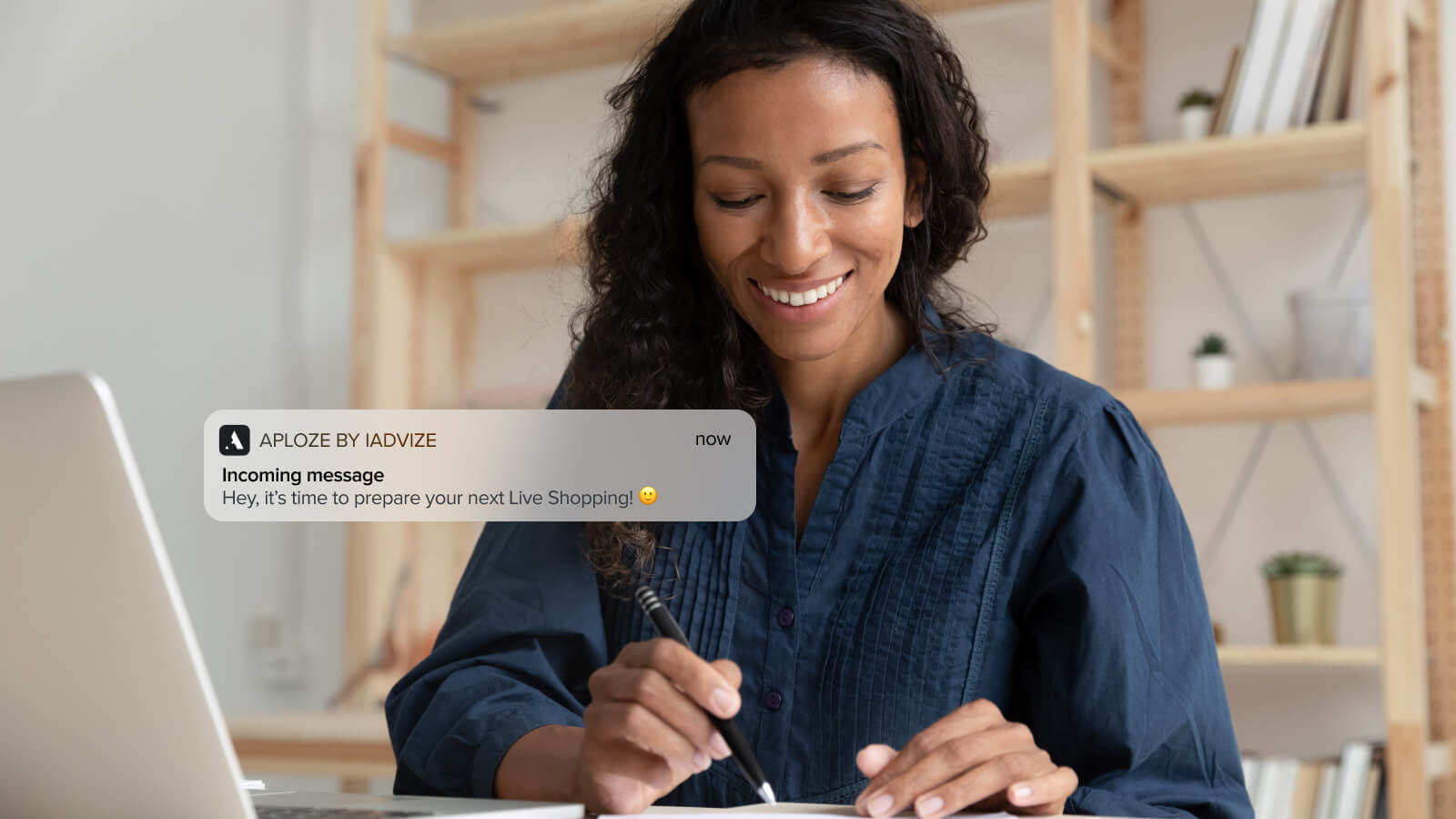
Every marketer knows that planning is the key to a successful event. That's especially true for a live shop. You have a short window of time — typically 30 to 40 minutes max — to make an impression on your audience and motivate conversions. Plus, you're aiming to foster conversation and community among your viewers. So every minute and every interaction counts.
Ready to get a jumpstart on your next live shop? Read on to learn about developing a run of show, structuring your event, and must-know tips to wow your viewers and generate more sales.
Developing a Run of Show for Your Next Live Shopping Event
As you prep for your live event, you'll have no shortage of checklists and schedules to manage. But one critical document to create is a run of show. As the Event Leadership Institute explains, a run of show provides an overview of each activity or segment along with helpful details for your hosts and audiovisual teams.
Here's a quick review of what your run of show document should include:
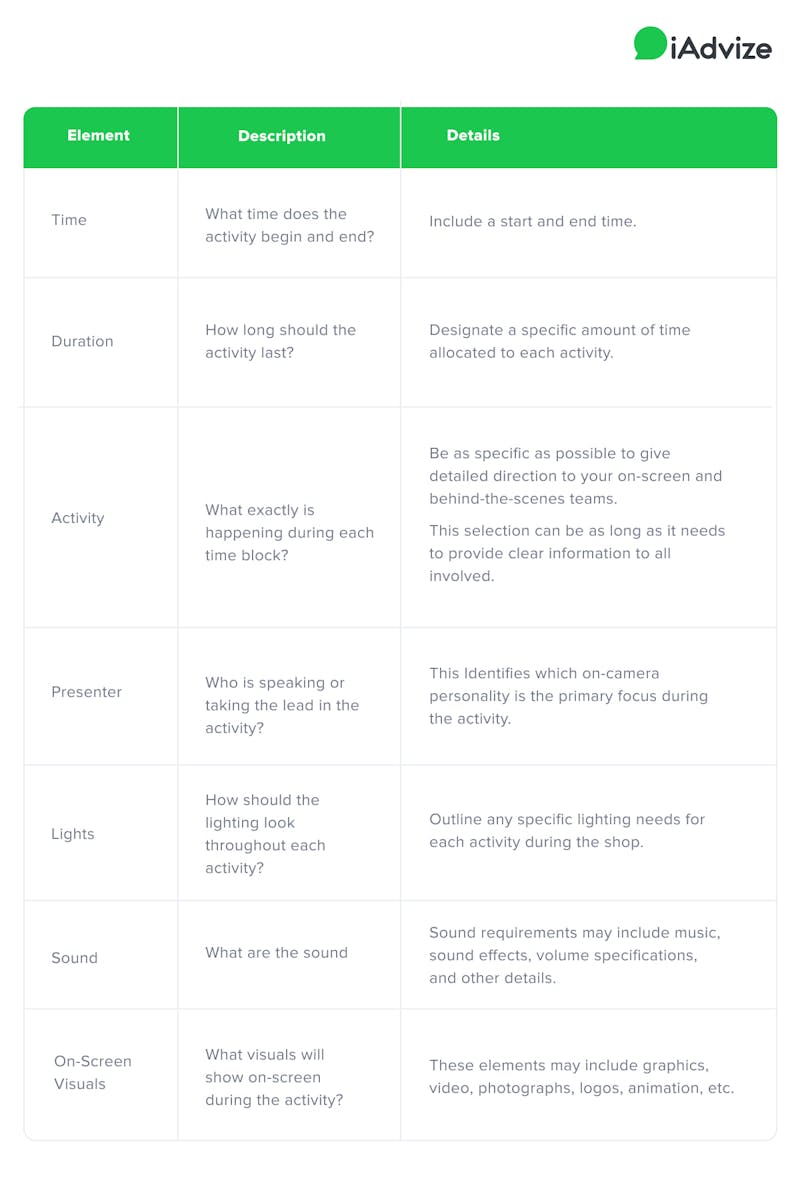
Although each event will be unique, there are some best practices to keep in mind while developing the run of show for your live event:
- Event Kickoff: Some shoppers will be first-time attendees at a live shop. So take a few minutes at the start to explain what Live Shopping is and how it works. Explain that Live Shopping is an immersive, interactive experience that helps people get real-world perspectives on products while getting answers to their questions.
- Duration: Most lives run between 30 to 40 minutes. The reason? Audience attention starts to wane after that time. So you need to make sure that you balance the time you spend demoing products and answering audience questions. Don't focus too intently on discussing your products and miss out on the interactive part of the live shop.
- Product Demos: Make sure you present four or five compelling reasons why people should buy your products. You don't need to highlight every feature in-depth. Stick to the top few selling points and focus on interacting and answering audience questions. That way, you'll motivate more people to add items to their carts.
The Importance of Professional-Grade Sound and Lighting
You should have professional-grade sound and lighting equipment for your live shop. Don't settle for less. At times, you can produce a quality Live Shopping event with a basic camera as long as your lighting and sound are on point.
Another key thing to know: You need to align your lighting to your event experience. Think about the products you are highlighting and the format for your event. For a product launch or expensive products, you'll need a quality lighting setup — usually with three professional lights — to showcase your products.
If you're demoing a large product, you'll need a good atmosphere and professional lighting. Beauty product demonstrations may only need one light to spotlight the face. If your goal is to maximize return on investment (ROI), you can potentially save by using only one light, but make sure it's professional-grade.
What's the takeaway? You need a dedicated production team and experienced audiovisual experts to achieve a high-quality event. Knowledgeable professionals can fine-tune lighting and sound to match your product categories and ensure you make a positive impression on your audiences.
What Core Activities Should Your Live Shopping Event Include?
Before you craft a run of show for your live shop, you need to define your event's primary goals. Here are a few questions you should consider:
- Are you primarily focused on brand awareness or building rapport with your shopper community?
- Is your goal to maximize return on investment (ROI)?
- Are you aiming to generate buzz about a new product line?
- How many products would you like to feature during your shop?
- Will your event be a "flash sale" with significant discounts on several products?
Your answers to these questions will help drive your planning and the flow of activities during your live shop. That said, live shopping events generally adhere to a common structure.
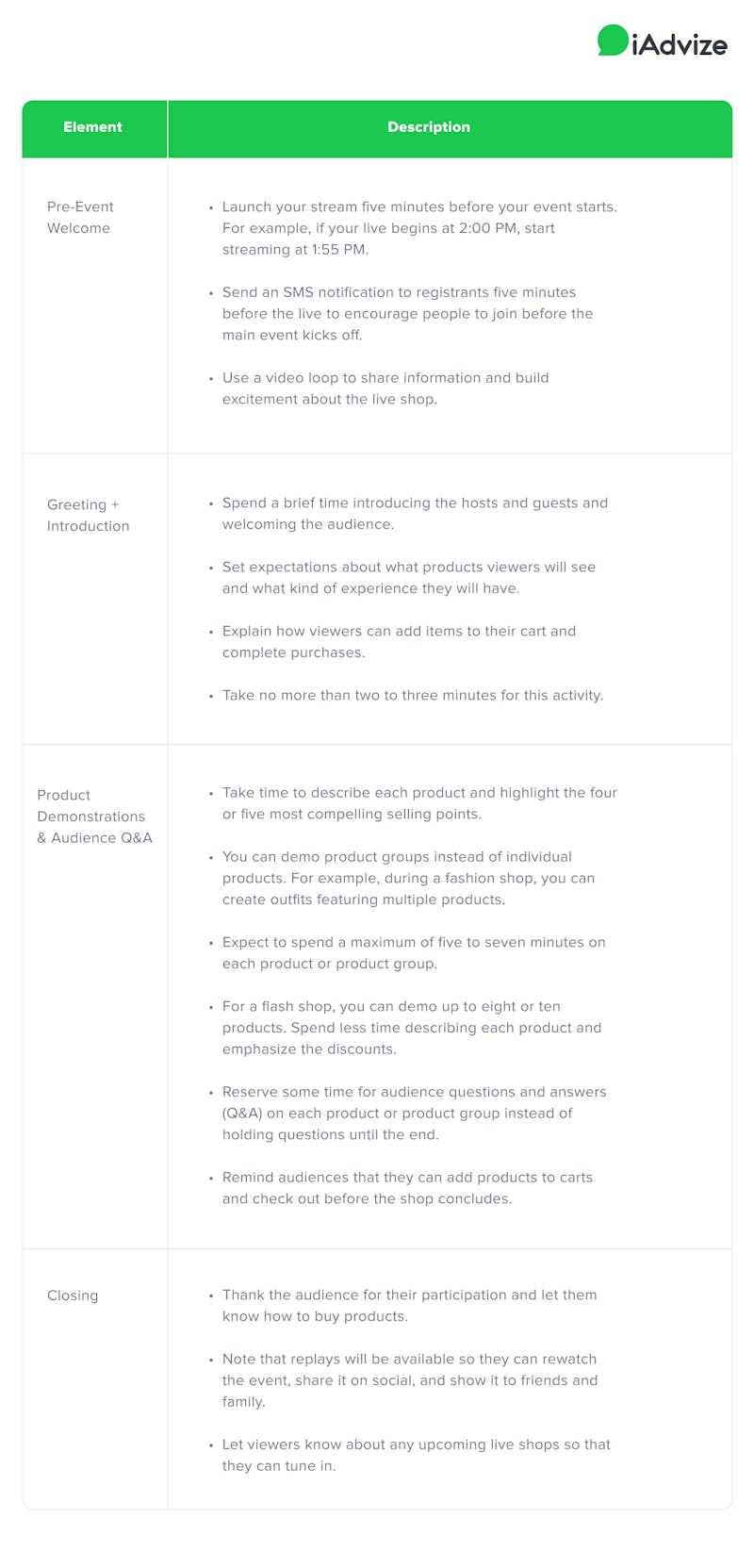
Facilitating Audience Q&As to Spark Interaction
A smart strategy to promote engagement is to take questions throughout the event rather than asking the audience to hold their input until the end. There are two primary ways to manage Q&A during a live shop. One alternative is dedicating time after each product demo to answer questions. The second approach is to take questions on a rolling basis throughout the shop.
Managing questions isn't the sole responsibility of the on-screen hosts. Instead, you should have a moderator keeping an eye on audience questions, answering some, and bringing others to the attention of the hosts.
What makes a Live Shopping event even more exciting and interactive is that audience members can answer each other's questions. Suppose one shopper asks if a particular coat will work well in their climate. Another viewer who owns the coat can chime in and provide advice. When that type of interaction occurs, your moderator can bring it to the host's attention, and the host can then communicate to the audience. The result of this exchange is immensely positive — the shopper with questions gets prompt answers, the person who answered earns recognition for their support, and your brand gets to highlight the power of your customer community to everyone watching.
5 Expert Tips for a Successful Live Shopping Event
Although event planning is a retail mainstay, Live Shopping is new territory for many brands. You can follow tried-and-true Live Shopping principles to make the most of every Live Shopping event you host.
#1: Focus on the Right Products
When you start conceptualizing your live event, you need to ask yourself an essential question: Why would viewers want to spend time with you? You need to have a good answer — and a very specific purpose — for hosting a live shop.
That should lead you to think critically about the products you want to feature. If a product is not attracting attention or selling on your website, it's not a good candidate to showcase in a shop. Clearly, it's losing ground and a Live Shopping event isn't likely to revive consumer interest. Instead, focus on products that are innovative or attention-grabbing. They're already popular, and a Live Shopping event can give them an added boost.
Exclusive discounts can draw people in, as can the opportunity to spend time with a favorite influencer. But even these factors won't save a product that audiences don't value.
The bottom line is: Live Shopping isn't the magic but amplifies the magic. Look at Live Shopping as a way to find those standout products and put them in front of an even bigger audience.
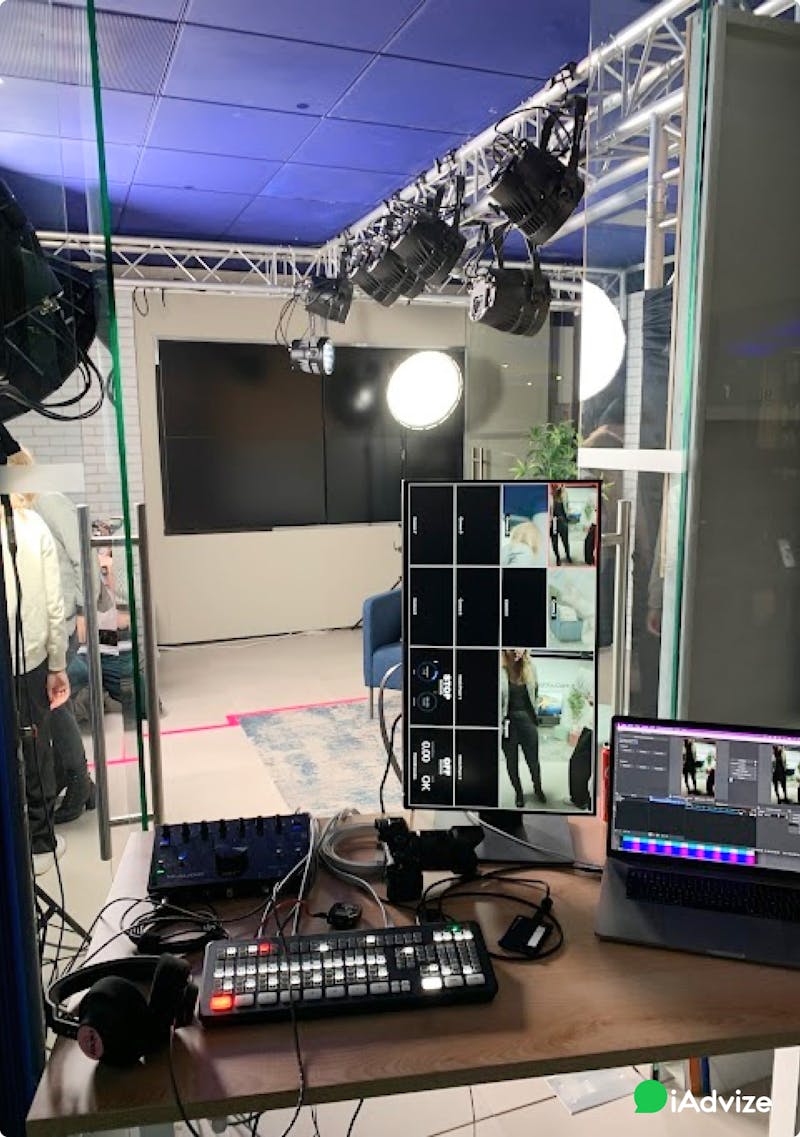
#2: Have at Least One Influencer and One Brand Expert Host Your Event
Most successful live shops have a well-known influencer as a host. By partnering with an influencer, you can capitalize on their following and bring your live event to the attention of people who might not know about it otherwise. When sourcing an influencer, be sure to look for someone who is used to creating video — whether on YouTube or other networks. These individuals can transition well to a Live Shopping setting.
It's equally important to have a product or brand expert co-host your shop. While this person should be comfortable speaking in front of a camera, they should have deep product expertise and be able to answer anticipated audience questions. If you can't have an in-house expert on set, invite them to participate as a moderator so that they can still converse with and provide insights to your audience.
To sum up, you need one influencer to be the voice of the audience who can interact and spark conversation with viewers. You also need one person who can be the voice of the brands and offer helpful information to promote product knowledge and conversions.
You can add another host to the mix if it adds value to the on-screen dynamic. For example, Valentino Beauty opted for three hosts. One was a journalist who explained the primary purpose of the beauty products. The second was an influencer — a model and a mother — who modeled the products. In addition, an in-house makeup artist joined to demonstrate how to apply the makeup featured in the shop.
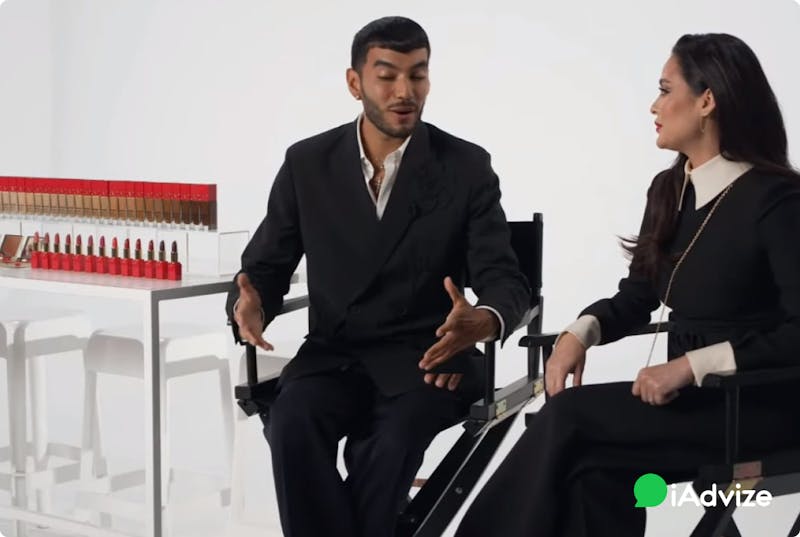
#3: Have a Script, but Allow Natural Dialogue, and Practice
You should create a script for your live shop, but leave some things open-ended. What's most important is to outline the key selling points for each product you're presenting, along with how long to spend on each product. Your hosts should know to emphasize these points to get core messages across to your audience. But to create a natural flow, don't tell your hosts everything to say. Let their personalities and passions, along with audience input, guide the event.
On the day of your live shop, have your hosts and technical teams come together to practice. Four hours before the event, have your technical experts on-site to set up lights, sound equipment, and cameras. Two hours before the event, do a thorough test to validate all equipment.
For the last pre-event hour, have the hosts run through the script several times to perfect the introduction, product presentations, and conclusion. Make sure your influencer and expert know exactly what to say to promote your products. This repetition can make presenting key messages second nature when the camera is on.
Through practice, your hosts will know how long to spend on each activity and when to transition segments. You can also have a host wear an earpiece so that a producer can provide guidance if the show's pacing needs to change. That way, you can help ensure your event stays on track when live.
#4: Plan Ahead to Keep Your Audience Engaged
Most people are comfortable sharing ideas and opinions on social media, but a live shopping event can be a new experience. Since interaction is an essential element of a live shop, you should have ideas ready to encourage audience participation.
Kick-off your event with an ice breaker question. A simple question such as "Where is everyone joining from today?" is an easy way to start the conversation flowing. As shoppers find some commonalities, they'll naturally begin talking with each other, which sets the stage for a highly interactive event.
One shop hosted by Marmiton and Phillips featured one host from France and one from Belgium. Since the timing of the shop coincided with a soccer world championship match between the two countries, the hosts asked the viewers which team they were supporting. A lively discussion ensued and was sustained throughout the event.
Asking questions throughout the shop is another tactic to keep audience members engaged. For example, you can ask viewers what they like about a product, what colors they prefer, or how they'd put the product to use in their everyday lives.
Another idea: Highlight audience reactions and comments so that the host can comment on them. If an audience member says they think your product is amazing, a host can note the commenter's name and say, "Thank you for your kind words. We think our product is beautiful too!" Rewarding and acknowledging audience reactions makes people feel good about contributing and lets viewers know you value your community.
Keep in mind that audiences tend to stop paying attention or drop out of live shops after about 20 minutes and have strategies ready to address this. If you want to showcase a particular product, present it first while attention is at its peak. Also, you can keep engagement high by ordering your shop to spotlight an exclusive offer or a new product later in the event to keep audiences tuned in. Use a countdown to track the minutes until the big reveal and boost excitement.
#5: Use a Mix of Automatic and Human Moderation
The best Live Shopping technology has built-in artificial intelligence (AI) to handle some moderation tasks. Your technology should have a pre-set library of terms for automated filtration, with customization available so that you can designate phrases to flag. While AI is powerful, it can never replace having a human-in-the-loop — that is, someone with the sensitivity and knowledge to manage conversations and prevent unwanted topics from surfacing.
Although moderators aren't on-camera, they play a crucial part in the overall live shopping experience. Your moderator needs to have enough know-how to address questions and strong people skills to foster interaction. And moderators can keep the discussion on track if off-topic or negative comments surface. If you do have some unwanted comments in the chat, your moderator can delete them or remove the problematic party from the shop altogether.
To keep conversations flowing, moderators need to respond quickly and provide focused, factual, and brief answers. They shouldn't get involved in lengthy back-and-forth conversations with a single shopper but should strive to address a broad array of questions. Single statements that provide a good answer to shopper inquiries are often the best bet.
Additionally, your moderator should focus on questions and comments tied to the products featured in your shop. At times, shoppers may want to know details about the influencer or expert, but the moderator should limit these dialogs and stick to product information and key brand messages.
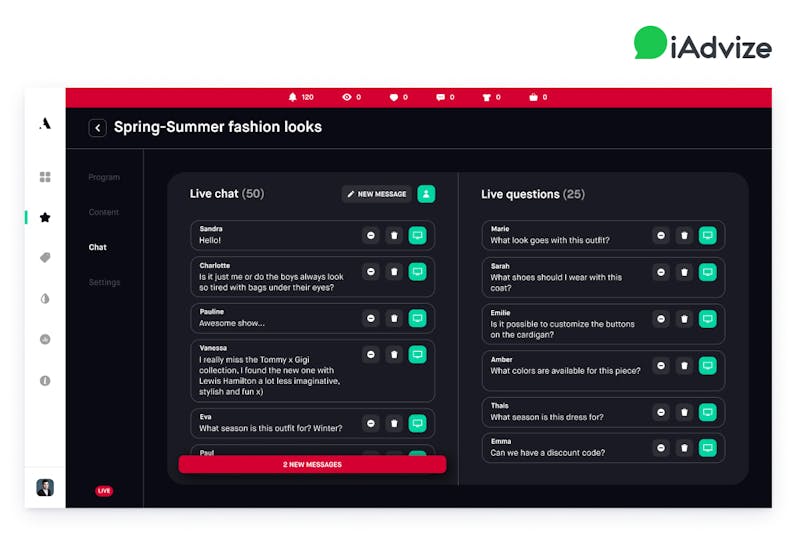
Get Ready to Go Live
Many brands are gearing up to host live shops in the year ahead. Some are brand new to Live Shopping, while others have a few events under their belts. Wherever your brand falls, you need to know best practices for success to generate audience engagement and maximize sales.
Where to begin? Start by getting familiar with our 13 steps to implement your Live Shopping strategy. Then, build on that framework by using the tips we've outlined here. You can also review our tips on how to build an audience and how to find an influencer to maximize the value of your next live shopping event.
We're entering a new and exciting chapter in retail, and live shopping is leading the way. Let's work together to humanize the digital experience and make retail conversational.
Ready to dive into Live Shopping? Let iAdvize be your guide. Dozens of top-name brands have used our Aploze platform to deliver immersive, interactive shopping experiences to their audiences. Our Live Shopping experts will coach you every step of the way! Get started today.

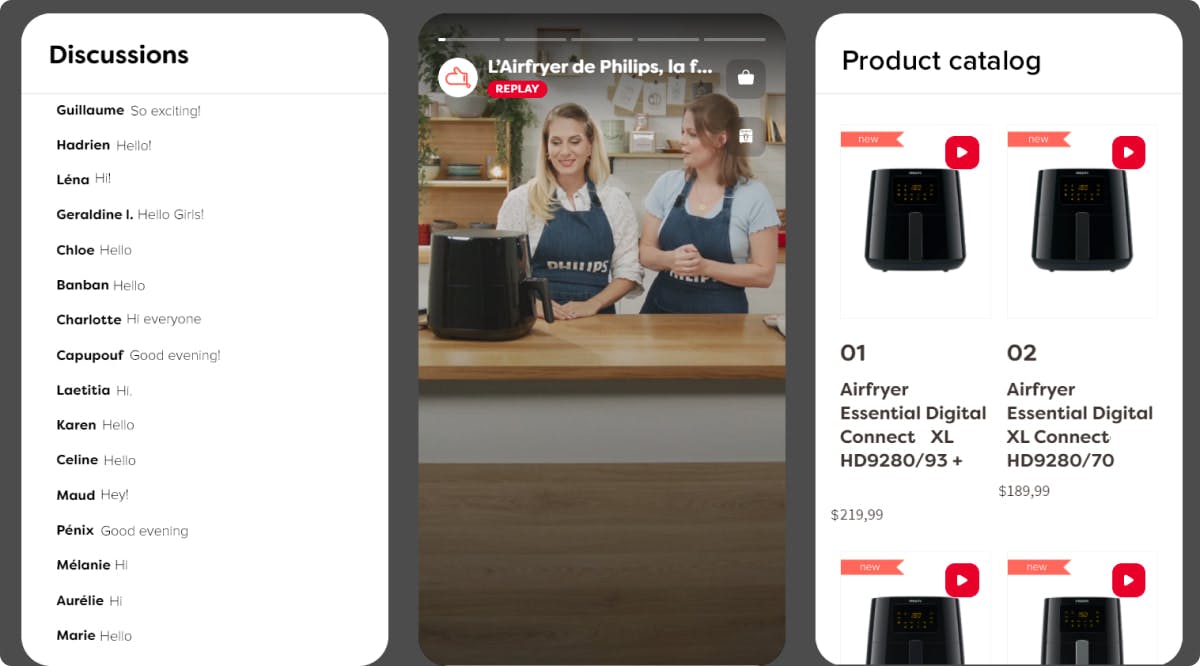
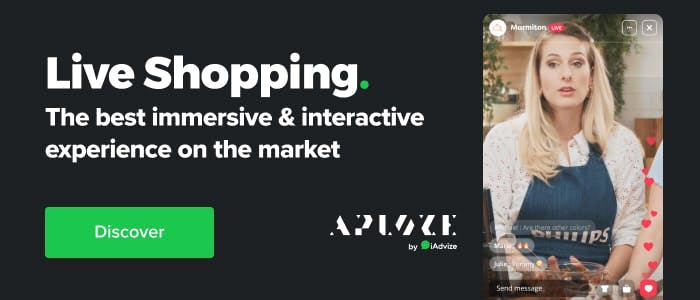
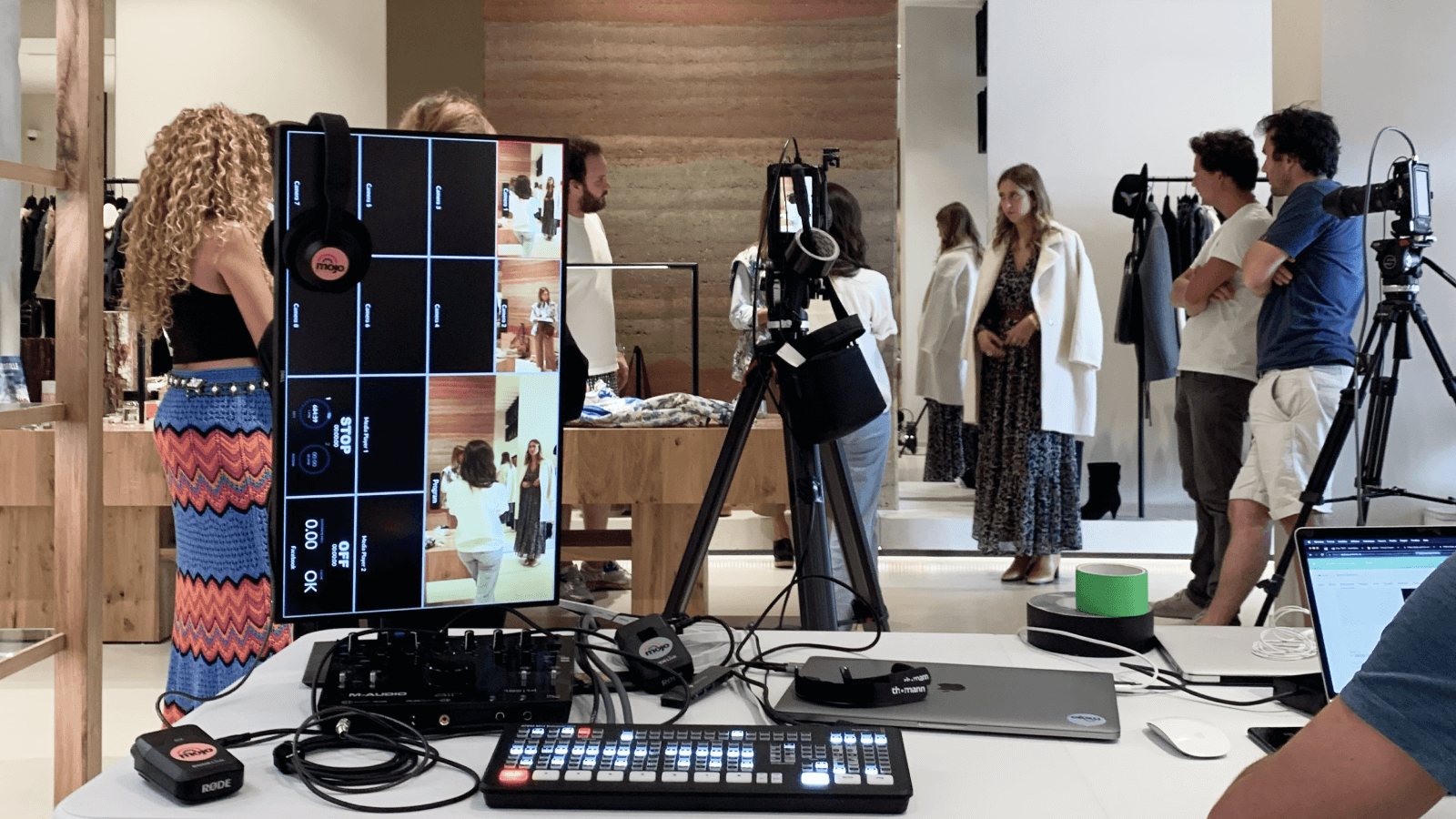
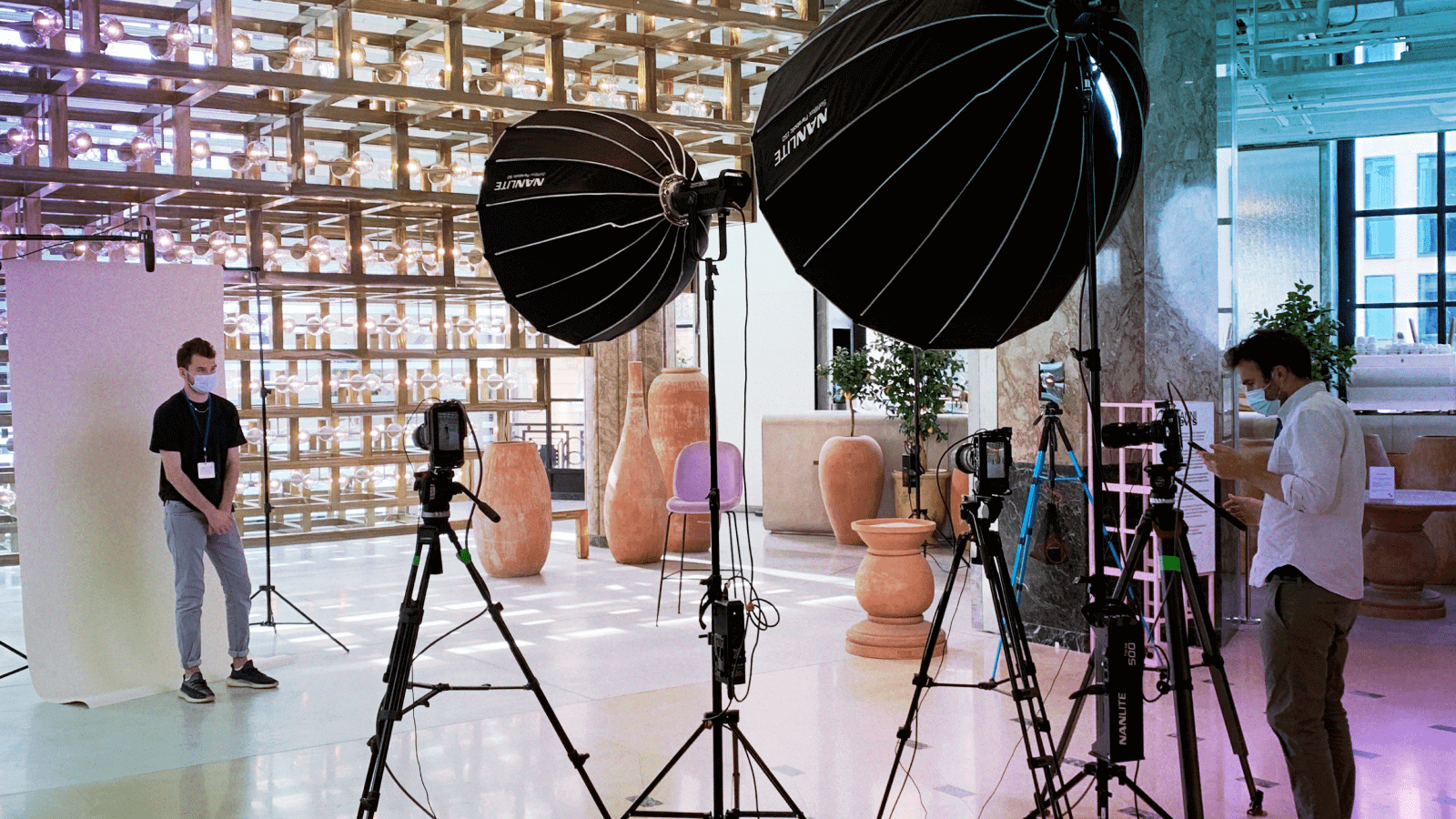
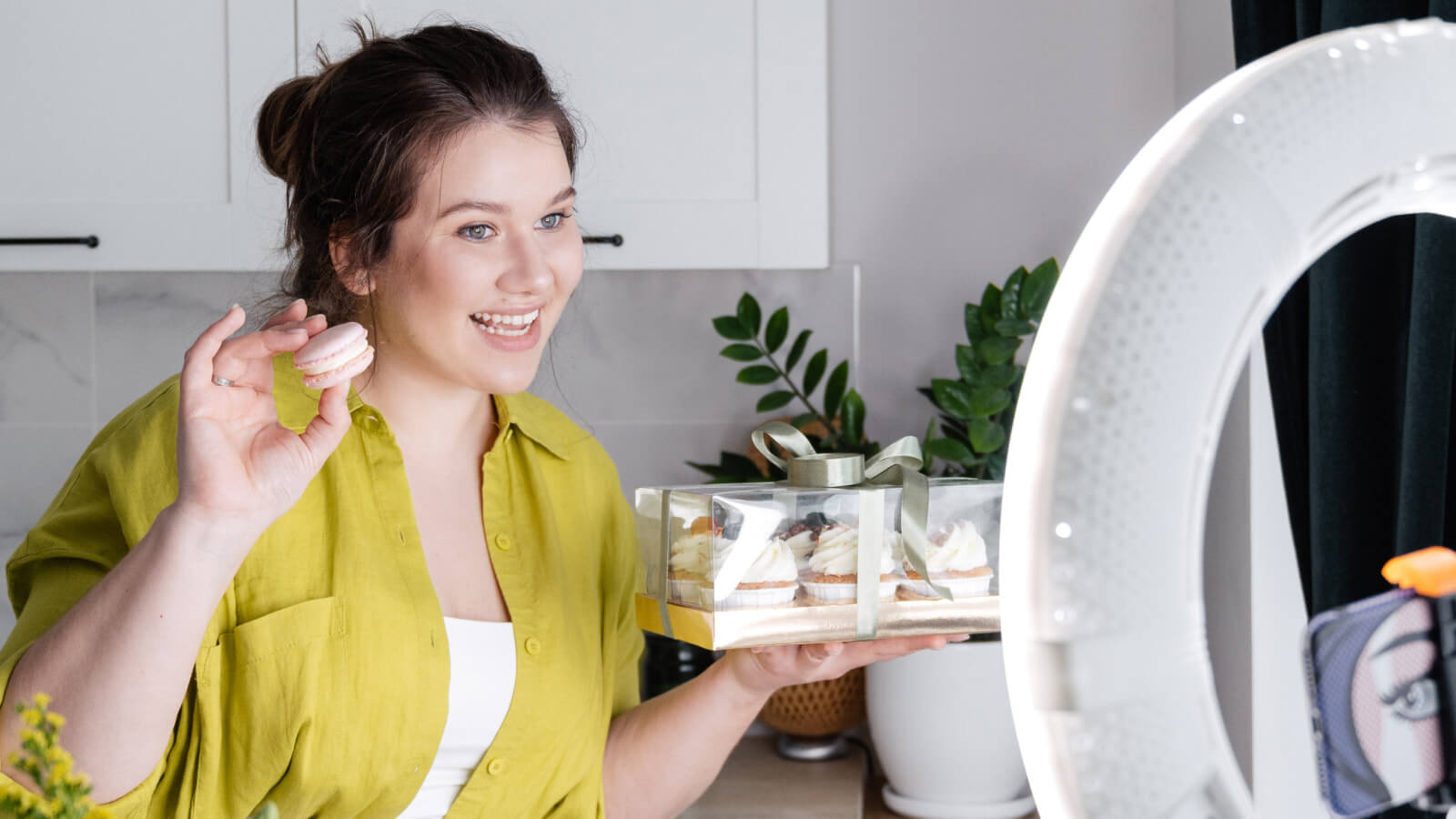
.png)



